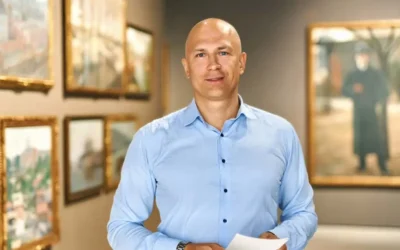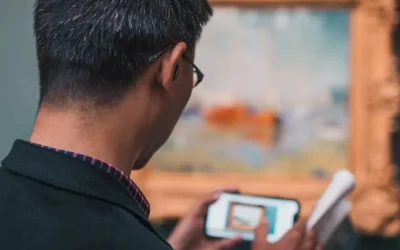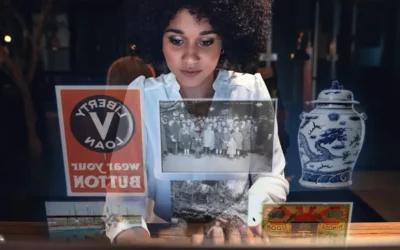How to Test and Improve the SEO of Your Museum CMS

Rachael Cristine Woody
Last week we kicked off our Search Engine Optimization (SEO) miniseries with SEO and the Discoverable Museum CMS. The post defined SEO and outlined how good SEO can lead to a more discoverable museum Collections Management System (CMS). This week’s post will lay out how we can effectively test the SEO of a museum CMS and offers 5 methods for how to get a jump start on improving it.
How can we determine whether the CMS has good SEO?
Whether you want to test your museum’s current CMS or check out a new CMS, it can be hard to find definitive evidence for how the CMS platform ranks in terms of SEO. This is mostly due to the fact that the main search engine behemoths (such as Google) are constantly changing the algorithms they use to determine SEO. Result rankings and the tools they use to “crawl” your website for the purposes of established SEO are constantly evolving. However, there is a fairly easy way to test basic SEO functionality by performing a search via one of the main search engines.
Testing CMS SEO
1. Open up an “incognito tab”. It’s important that you use a browser session that doesn’t track and store the searches you’ve performed and the websites you’ve visited previously as this skews the results.
2. Create a list of words and phrases you wish to search. I recommend you begin with general audience examples and then move to more advanced or expert-only words and phrases. For example:
a. General Audience: historic pottery, Asian pottery, Asian ceramics
b. Advanced: Ming Dynasty ceramics, Kintsugi, Aoki Mokube
The goal is to make sure that both general to advanced words and phrases can pull up the museum collection within the first 2 pages of the search engine results. The top first-half of results on the first page is ideal and something to aim for.
3. Within the results you should see multiple “hits” for your museum and collection items in the CMS. For example, in addition to the CMS items, you should also see the museum main website, social pages, blog posts, videos, news coverage, etc. This diversity of results should represent several different points of origin and offer different formats people can engage with. This diversity of content is attractive to your audience and will help increase your museum’s SEO.
5 Methods to Improve SEO:
- Easy to Link and Share: Create easy, linkable digital items that can be searched and found via search engines and easily shareable through email and social media
- Alt-Text for Describing Images: To help comply with WCAG best practices and increase your Search Engine Optimization (SEO), provide alt-text for all museum images. Alt-text helps screen readers describe images to visitors with visual impairments and helps inform crawlers working to determine SEO.
- Points of Discovery: Create points of discovery by pre-packaging items that share a common interest. This encourages users to browse the collection—thereby creating a point of access—while also building the SEO score.
- Cross-link: Cross link your content that’s related to each other. For example, your museum’s blog on one platform publishes a “Top 10 Museum Objects” list by gathering the CMS item links for the blog post.
- Cross-promote: Team up with a peer museum, community organization, subject matter expert, local municipal representative, the tourism board, etc., to write press releases, blog posts, and social media posts that links to the collection. The more the CMS is linked outside of the CMS, the better its SEO ranking and the more discoverable it will be.
Looking for More?
There are SEO tools and companies that can perform SEO audits and provide an analysis on where museum content online ranks. If you’re interested in investing more resources in SEO, it’s worth exploring companies your museum can partner with in order to have access to SEO experts.
Conclusion
That wraps up our second of three posts in the SEO miniseries. Next week we’ll conclude the series by reviewing the benefits of a discoverable CMS and offer additional resources for you to continue your SEO journey.

Rachael Cristine Woody
Expert Rachael Cristine Woody advises on museum strategies, collections management, and grant writing for a wide variety of clients. In addition to several titles published by Lucidea Press, Ms. Woody is a regular contributor to the Think Clearly blog. Register here for her upcoming webinar, “Ask Me Anything about Grants” on January 27th. And learn about Lucidea’s Argus solution for powerful and innovative museum collections management.
Similar Posts
Storytelling to Inspire Reflection Using Museum Collections Online
Storytelling with online collections is impactful, whether we choose online-only or as part of a hybrid approach to museum exhibitions.
Museum Collections Online: Learning Through Storytelling
Digitizing museum collections introduces new and engaging opportunities for storytelling. By leveraging digital surrogates—essentially online representations of physical objects—museums can enhance how they present narratives and information to audiences.
The Role of Museum Collections Online in Storytelling & Audience Engagement
Storytelling with museum collections online allows for a great degree of flexibility, offers additional detail, and lends a dynamism that is difficult to produce within a physical exhibition.
Examples of How Archives Can Be Used to Elevate Museum Collections
Last week we reviewed how archives can enhance museum collections online. This week will continue our work with an examination of specific examples, including what items different types of archives may contain and where to capture this data.




Leave a Comment
Comments are reviewed and must adhere to our comments policy.
0 Comments